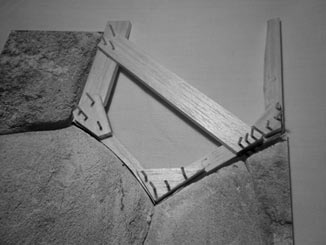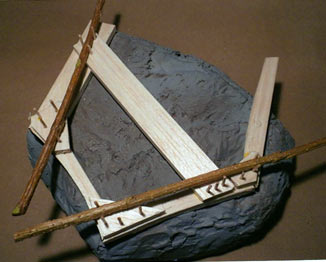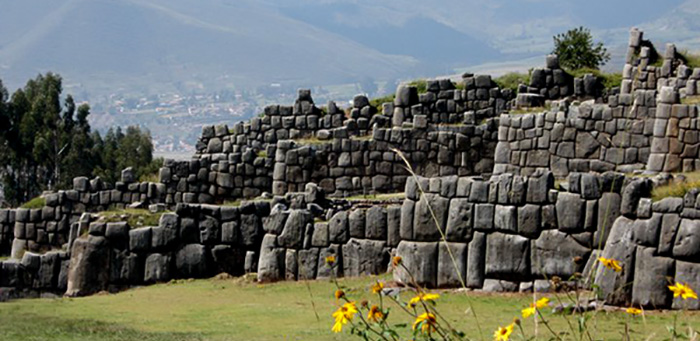
PHOTO: jesuseagle.com
“And I may say, once and for all, carefully weighing my words, that in no part of the world I have seen stones cut with such mathematical precision and admirable skill as in Peru, and in no part of Peru are there any to surpass those which are scattered over the plain of Tiahuanaco.”- Ephraim George Squier, of Travel and Exploration in the Land of the Incas, p. 279
Last time on Unsolved Archaeology, we talked about the mysterious fall of the Minoans. The Minoans were one of the most advanced cultures in the human world at the time of their height. They had a writing system, distinctive architecture, a highly complex religion, and traded with most of the known world. Suddenly, in 1200 BC, they vanished. Nobody knows what exactly happened to them.
This time we’re talking about an architectural phenomenon that spans several different countries across the world. It’s called vitrified stonework, and it’s a work of ingenuity using a technology that has since been lost.
Mostly, the debate surrounds the impressive Incan fort of Sacsayhuaman. Experts today can’t agree exactly how the ancients were able to accomplish this feat of engineering. Some have cited alien intervention. Others think it was done through a vast network of mirrors and lenses to concentrate sunlight. The theories just keep growing and getting weirder and weirder. The only thing anyone can agree on is how impressive it is.
What is Vitrified Stonework?
Before we go any further, we have to understand what vitrification is. Vitrification is, essentially, the process of transforming any substance into glass. It happens when the materials in question are heated to a point that they turn into liquid, and then rapidly cooling that liquid into a solid.
Vitrified stonework, then, is stonework that could only be achieved by superheating rock (usually volcanic basalt), and then rapidly cooling it to achieve the affect of the stones being “melted together”. This is understandably a massive achievement, but it wasn’t impossible with the technologies of the ancients.
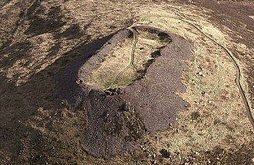
A Vitrified Fort in Scotland [PHOTO: Ancient Wisdom]
This problem is only exacerbated when you travel to South America. Vitrified stonework is found here in Peru, in the Andes, and these are the ones that we’re going to talk about today.

PHOTO: laalcabeza.org
These forts and temples dot the Peruvian mountainside. Stones hundreds of feet tall are piled up together, seeming to fit together as if they were made to do so. Even with a thousand years of weathering, they still shine like polished glass. The stonework is so skillful, in fact, that you can’t slip a sheet of paper between the stones.
The mystery? The scale of the fort makes the solution of simply building and insulating a fire obviously impossible.
The Mystery of Sacsayhuaman
![The walls of Sacsayhuaman [PHOTO: world-mysteries.com]](https://historythings.com/wp-content/uploads/2016/08/sacsayhuaman2.jpg)
The walls of Sacsayhuaman [PHOTO: world-mysteries.com]
The Inca had their own story about the creation of Sacsayhuaman, it was built as the “head” of the metaphorical “lion of Cusco”. The site had major religious significance, and perhaps that was what led the Inca to create such a massive, impressive fortress of stone.
How did they do it? Nobody is really sure! Researchers have been throwing out all sorts of theories for years.
The most popular theory, of course, is that aliens somehow came down and gave the Inca the technology to create Sacsayhuaman. Unless you’re a conspiracy theorist, this really doesn’t hold water.
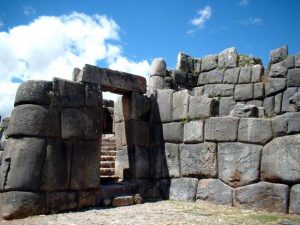
PHOTO: turismoencusco.com
Other people have suggested that the ancients had atomic wars which fused their forts together to form the vitrified surface we see today. However, none of the sites we have today in Peru or Scotland or anywhere else where the stonework is vitrified have any evidence to support this theory. The sites are not radioactive and the chemical testing doesn’t match up.
Others have thought that perhaps the stone was cut and moved, but then was fused together because of a forest fire, or an intense battle. Many researchers have tried to prove this is possible on test walls, but all have failed.
Another outlandish theory suggests that the Inca used a series of complex mirrors and lenses to harness the sun’s rays to create enough heat to melt the stone, but this seems highly overcomplicated and unlikely. If they had such a system, wouldn’t they have written about it somewhere? It seems like it would be a huge scientific achievement worth writing down for posterity.
Scribing?
The only plausible theory that has been submitted was developed by a man named John McCauley. He’s a retired architect and construction manager, and has researched ancient construction techniques for over 40 years. His hypothesis is centered around the wisdom and ingenuity of the Inca and other ancient people.
His theory states that the Inca probably used a system called “scribing”, or basically, “template-making”, to create the interlocking system of megalithic stones we see at Sacsayhuaman.
He believes that the Inca moved the huge pieces of rock up to the site and carved and polished them right there on the hill. In order to create stones that fit so perfectly together, they would carefully measure the space they needed and create a wooden template
This template would then be applied to another stone that sort of fit the shape, and the stone would be shaped and polished to match the template.
Of course, this means that the Inca would have to be extremely accurate stonemasons. We know that they possessed a lot of knowledge of mathematics and science, and that they were very accurate at stone carving. Still, this theory seems almost a little too far-fetched.
The stones at Sacsayhuaman are huge. The precision needed to create a wall, with no mortar, where you can’t even slip a piece of paper in between the cracks at any point, even with templates, chiseling, and polishing, would have been extremely difficult and taken an inordinate amount of time.
The other problem with this theory is that the stone has been vitrified. Even with the cutting and polishing, the builders still would have had to fit these huge, megalithic stones into an equally megalithic furnace and vitrify them at temperatures upward of 1100 degrees. This, of course, would have messed with the precise carving. And, if the stones had been carved after being vitrified and polished, then we would see obvious tool marks on the stone where the glass-like surface was cut away.
Still, it’s the best theory we have so far, and it’s the only one that doesn’t sound like a wacky conspiracy theory. Does that make it correct? Not at all.
In all likelihood, we’ll never know how fortresses like Sacsayhuaman were constructed. There simply isn’t enough evidence to know.
The one thing we have to remember when we’re looking at the incredible structures like Stonehenge or Sacsayhuaman or the Pyramids is that the ancients were not just cavemen. They were not any more or any less intelligent than we were. They were human, just like us, and incredibly ingenious and resourceful, enough so that they created huge feats of engineering with primitive technology that we, with all of our computers and microchips and science, are still struggling to understand.


